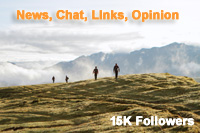ARWC 2015 Brazil - Pantanal
Talking to ‘The Colonel’ – The Race and Pantanal
Rob Howard / 17.11.2015


I was told the best person to speak to and get an insider view of the Pantanal, its recent history and future plans, was ‘The Colonel’, a man who has been influential in supporting the World Championship coming to this area.
He is travelling on the Kalypso and assisting and advising the race and sat down with a group of race journalists to explain some of his history and the work he facilitates in the Pantanal.
He began by saying the areas vast ecosystem and isolation had largely protected it and that man has largely lived in harmony with nature here over the centuries. Only cattle farming has really impacted the area in the last century, and then only minimally, but by the 1970’s and 80’s trade in animals and animal products, particularly Caiman skins for the fashion trade, was rife.
This is when the Colonel’ first came to the area, working with the Police to fight the criminals who controlled and exploited the area. In 1983 he was badly wounded in a gun fight and lucky to survive, and returned to Corumba in 1995 to form an 80 strong battalion to continue the fight. At that time up 3 million caiman leathers a year were smuggled out, illegal fishing was rife and armed gangs from Paraguay and Bolivia controlled the trade and cowed the local population.
In a jungle guerrilla war his battalion took the fight to them and at the same time began to win the hearts and minds of the local population, convincing them that they could improve their lives by returning to harmony with nature not exploiting it.
He told us that now the area is almost 100% under control, fishing tourism is well established and that the race can help promote The Pantanal as a destination for adventure and eco-tourism.
Where the teams are currently racing is part of the first National Park in the region, only established in 2005, and there are plans to expand this to cover a million hectares in 5 years, making it the biggest and most eco-diverse protected area on earth. All this needs to be done by charitable and NGO work, there is little government support, and he is hoping the race, the film, photos and publicity it generates, and the stories the teams will tell of their adventures will further this cause.
Already teams have experienced more wildlife encounters here than at any other destination, and there are likely to be more Jaguar sighting as more teams come into this area, where they are common. Just this afternoon there was a large Anaconda swimming at the side of the Kalypso, and sightings of Caimen and Capybara have been common. Parrots, storks, heron and hundreds of other bird species are all around, their noise a constant backdrop to travel in Pantanal.
So far the race has been in the area alongside the River Paraguay, which is really the only logistical support route possible, but ‘The Colonel’ said that once teams reach AT5 at Porto San Pedro and move into the flooded area away from the river (on the next two packraft/trek stages) they will experience the true diversity and richness of The Pantanal.
The wildlife encounters and vast terrain they have already experienced might seem reward enough for their endurance so far, but it sounds as though they are only now about to move into the richest, most challenging and most rewarding part of the course.
At the same time they are playing a part in the wider economic and political plans for an area of wilderness of global importance, which was only pacified and its people united to work for their future a little over a decade ago.







 SleepMonsters
SleepMonsters



